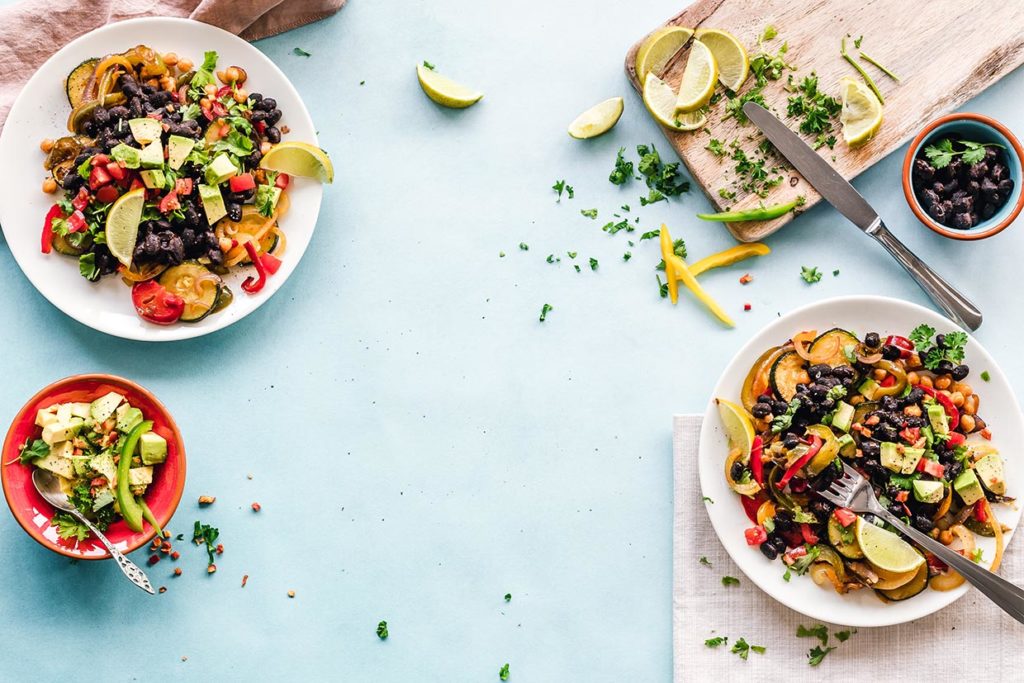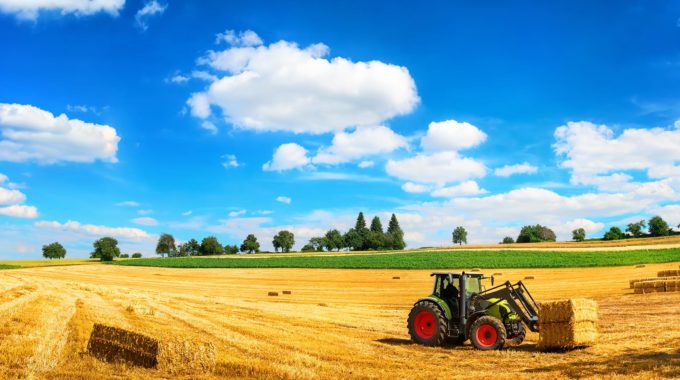Croplands: our global share is shrinking
Croplands are a valuable yet scarce natural resource. To guard against serious and potentially irreversible environmental harm, croplands should not extend beyond 15 percent of the earth’s ice-free surface. As croplands are mainly used for food production, it’s important to ask whether our diets are biting off more than our fair share.
In our research, we looked at the cropland footprints of the diets of 9000 Australians, involving more than 5000 foods. We found that if everyone ate like the average Australian, the 15 percent limit on the area for global croplands would be exceeded, albeit modestly. Reducing intake of discretionary foods is the best way to make our diets more sustainable.

The average Australian diet
Ploughing new lands for crop production entails the loss of forest and grassland. This can threaten biodiversity through habitat loss, and disturb water and nutrient cycles through changes in drainage and fertiliser use. Croplands are used to grow cereals such as wheat. They are also used to grow fruits and vegetables, nuts, oilseeds and legumes. Perhaps less obviously, crops are used to feed livestock and in aquaculture.
In landmark research in 2009, scientists proposed the idea of “planetary boundaries” to mark the thresholds for our use of the environment, such as croplands. If global croplands are to occupy no more than 15 percent of the ice-free land surface, as they proposed, the total area cannot extend beyond about 2 billion hectares. It’s difficult to know for sure. But it’s likely the world is already approaching this boundary, or even marginally exceeding it.
With today’s global population of around 7.8 billion, this limit means the requirements of an individual’s daily diet should not exceed more than 7 square metres of cropland. Our research found that on average, Australian adult diets slightly exceed this amount, requiring 7.1 square metres per day. However, the world’s population is rapidly increasing and is expected to surpass 8.5 billion by 2030. At 9 billion, the global share of croplands shrinks to around 6.1 square metres per person per day.

Eating beyond the boundary
The good news is that Australian dietary habits vary enormously. Already, many Australians are eating well and within the global cropland boundary. Australians with healthier diets and lower cropland footprints required only 4.2 square metres per day.
These lower footprint diets were distinguished by much lower consumption of discretionary foods. These are energy-dense and nutrient-poor foods high in saturated fat, added sugars, added salt, and alcohol. All ingredients associated with foods with high-crop use.
For example, potato chips are made from potato and vegetable oil, both of which require cropland. Even beer depends on cropland, using barley and hops in its production. Processed foods also often use a surprising amount of cropland. An apple might weigh 100 grams, but a small glass of apple juice might use 400 grams of apples.
Along with reducing food waste, reducing the intake of discretionary foods is the most important action we can take to make out diets healthier and more sustainable. These discretionary foods also tend to lead to the over-consumption of energy due to their high energy density. This is not just a problem for the environment, but also our waistlines.
According to the Australian Dietary Guidelines, most Australian’s consume too many discretionary foods instead of choosing foods from the five food groups: grains, vegetables and legumes, fruits, dairy products and meats.

Animal-sourced foods
Following discretionary foods, the second-largest contribution to the cropland footprint is from the “fresh meat and alternatives” food group. This food group includes eggs, nuts and legumes and is an important source of protein and nutrients. In this food group, wild-caught seafood and game meats had no associated cropland use. Also at the lower end of the scale were tofu and pulses like chickpeas (0.17 and 0.18 square metres per serving).
Lamb and beef had moderate cropland footprints (0.64 and 0.82 square metres per serving respectively). That’s because in Australia, sheep and cattle mostly graze on grasslands. But livestock have higher cropland footprints when they’re fed with crop-based feed such as cereals, soybeans and oilseed meals. This includes aquaculture salmon (0.70 square metres per serving); chicken (1.62 square metres per serving); and pork (2.21 square metres per serving). Eggs require 0.98 square metres of cropland per serving.

How to eat within your boundary
If Australians follow the Australian Dietary Guidelines, it is possible to eat within the global cropland boundary. There is flexibility to enjoy a variety of foods in the “fresh meats and alternatives” food group. However, the guidelines don’t specify the amount of poultry or pork to consume. This becomes an issue if these meats make up a big part of a diet. Diets compliant with the Australian Dietary Guidelines that were within the global cropland boundary contained more seafood, beef, lamb and vegetarian food.
It’s also important to note croplands across Australia and the world are not equally productive. To provide a measure of resource use, we calculated cropland footprints taking both area occupied and productive potential into account. In Australia, average wheat yields are typically below 2 metric tons per hectare. Compare this to northern Europe, where wheat yields of between 6 to 10 metric tons per hectare are common.
In any case, stick to a healthier diet as described in the dietary guidelines. And only consume a moderate amount of cropland-intensive poultry and pork. This is the best way to ensure you’re eating within sustainable cropland boundaries. Otherwise, there just won’t be enough food to go around.
This article was originally published by The Conversation. Dr Brad Ridoutt is a Principal Research Scientist with the CSIRO.









